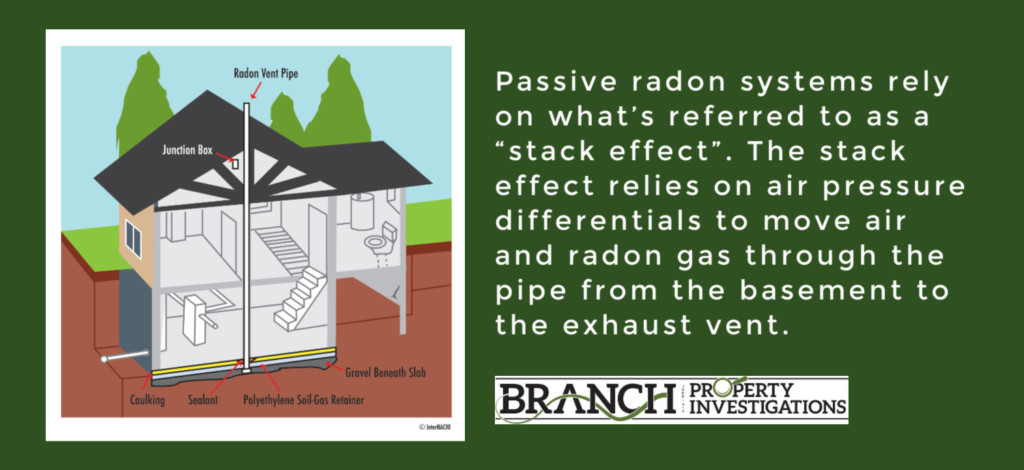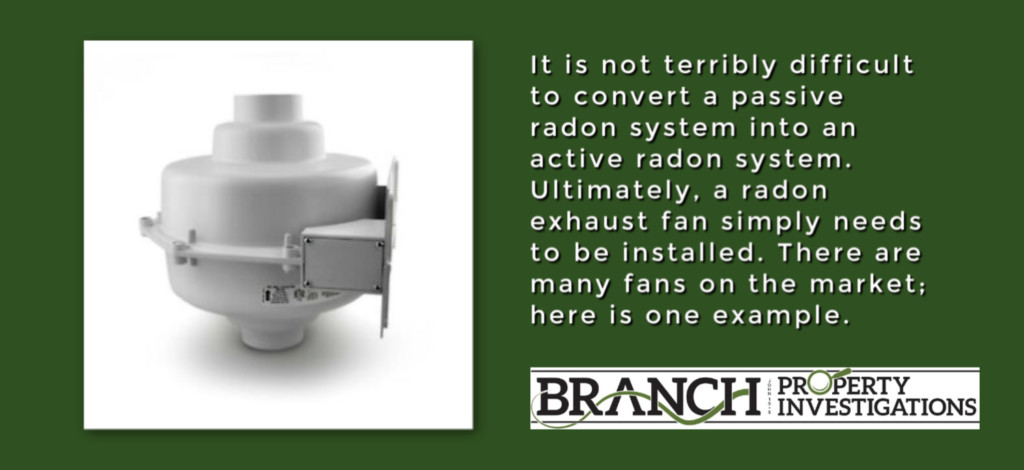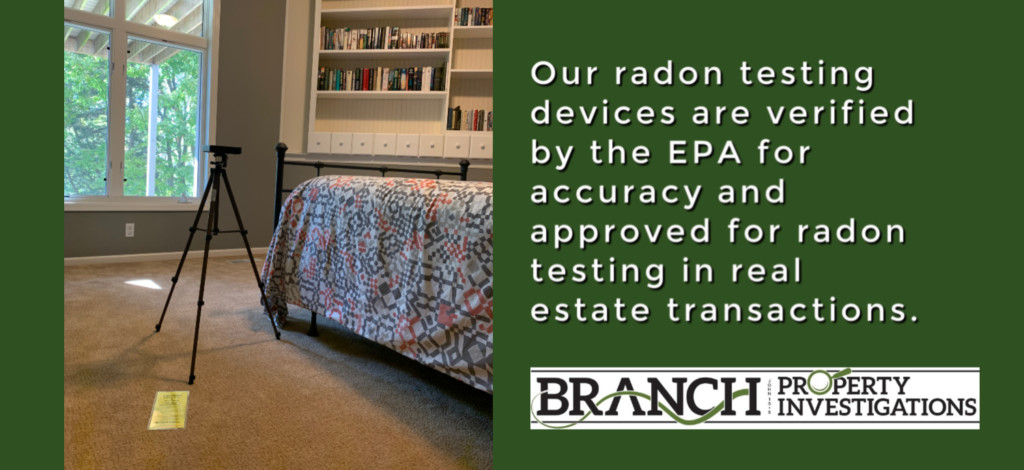A passive radon system is a radon system without a radon exhaust fan. A passive system typically runs from the basement sump basket or drain tile and exhausts through the roof, without the use of an active radon exhaust fan. As of 2009, all new homes in MN require a passive mitigation system.
The Benefits of a Passive Mitigation Systems
The most obvious benefit is that it reduces the risk of lung cancer. Breathing in radon decay products may result in lung cancer and is the most significant risk associated with radon. According to the MN Department of Health, the average radon level in MN is more than three times higher than the average U.S. radon level so it’s a legitimate health risk for many of us!
Another benefit to a passive system is that it helps control moisture in your basement. Sealing openings in the basement floor is critically important. This helps prevent moisture migrating from under the slab to the rest of the basement, and eventually the rest of the house. Lastly, a passive system doesn’t require the use of a fan, so electricity consumption is not a concern.
What Does a Passive Mitigation System Look Like?
Earlier this week we came across a passive system while inspecting a home in Medina, MN, and thought a short, video-explanation might be helpful: What Is a Passive Mitigation System? (YouTube)
What is the Stack Effect?
Passive radon systems rely on what’s referred to as a “stack effect”. The stack effect relies on air pressure differentials to move air and radon gas through the pipe from the basement to the exhaust vent. Air buoyancy takes place when there is a difference between indoor and outdoor air density resulting from temperature and moisture variations. New homes are typically air tight to accommodate energy efficiencies. Therefore the stack effect is usually not enough to significantly reduce radon levels in a passive radon system.
My Radon Test Came Back and the Level Exceeded 4 pCi/L
The Environment Protection Agency claims that in order for a home to be deemed safe, the radon levels should not exceed 4 pCi/L. They also suggest it’s always best to consider lowering the radon levels to below 2 pCi/L. If your test results come back slightly elevated you may want to consider a follow-up test. This will confirm whether radon levels are high enough to warrant active mitigation.
If the average of the initial test and the second test results are equal to or greater than 4 pCi/L, then radon mitigation is highly recommended. When the average of the two test results is less than 4 pCi/L, consider testing again sometime in the future.
Converting a Passive Radon Mitigation System to an Active System
It is not terribly difficult to convert a passive radon system into an active radon system. Ultimately, a radon exhaust fan simply needs to be installed. It seems easy enough and sometimes it really is easy. No two homes are the same, however. If a passive system was installed there is not always consideration of where the fan would be installed.
Why does this matter? It is important because the fan needs an electrical outlet to power the radon fan. In many situations, an electrical outlet may already exist in an area near where the radon exhaust fan needs to go. Most often I find these in the attic, so I recommend checking the attic first.
More Questions About Radon? We have Answers!
Please visit our website’s Radon FAQ page to find answers to all your radon questions. The professionals at Branch Property Investigations use industry-leading, continuous radon monitors. Our radon testing devices are verified by the National Radon Professional Program for accuracy. They are approved for radon testing in real estate transactions. Our monitors provide a more accurate picture of radon levels than the charcoal canister test kits you may have read about.
Additionally, we calibrate our monitors on an annual basis to ensure their accuracy. We do not perform mitigations so our testing poses no potential conflict of interest.
Schedule your radon test online or give us a call at (612) 440-8466!





